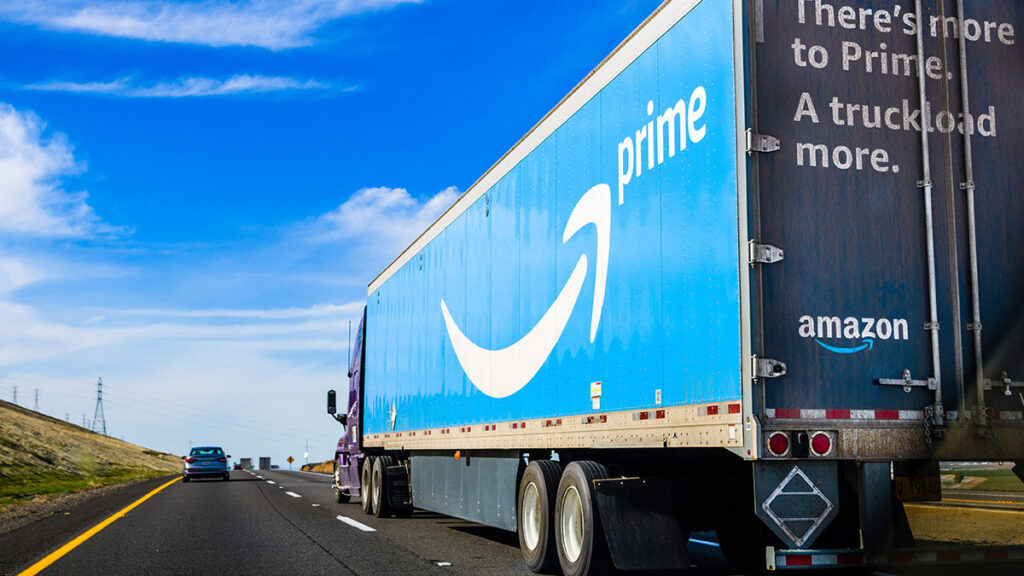
E-commerce giant Amazon has impacted the logistics industry in a myriad number of ways and is single-handedly responsible for dictating present-day consumer preferences and the urgency in freight movement today. Over the last two decades, it has become the single most significant driver of change in the global postal, packaging, and courier services market, changing consumer habits and raising the bar for sellers.
The phenomenon, popularly known as the Amazon Effect, refers to the revolutionary way Amazon made available a wide range of products in various delivery options, catering to the consumer’s choice of location and speed, thereby crowning it the market leader in e-commerce.
Amazon has encouraged consumers to expect overnight deliveries, a trend that shook the supply chain industry.
Amazon has encouraged consumers to expect overnight deliveries, a trend that shook the supply chain industry. It has led companies to invest more extensively in expanding their inventories, building new warehouses, and implementing new logistics strategies, even as the demand for speedy delivery and world-class service increases.
New Customer Expectation For The Whole Industry
Consumers first tasted the two-day delivery system when Amazon launched its Prime membership in 2005. For a small fee, Prime provided an allied, one-of-its-kind service to its subscribers. As a Prime member, you could stream exclusive media, enjoy cloud storage, access branded products such as Alexa and Kindle, and keep all your Amazon products and services interconnected. These services were made available at the consumer’s beck and call— at their fingertips and at competitive prices. Such a move, previously unheard of, was a game-changer in the e-commerce industry, commencing Amazon’s march towards dominance.
The COVID-19 pandemic worked in favor of this ubiquitous, no-contact model. Amazon used its delivery model to serve customers a range of services in the comfort of their homes. Using the end-to-end visibility, it catered to their anticipations by enabling them to pinpoint the exact location of their product, thereby bringing complete transparency to the table.
All these facilities have left customers hungry for more
All these facilities have left customers hungry for more. The demand for products increases even as customers grow impatient. When other retail giants boarded the two-day delivery bandwagon, Amazon went one step ahead and introduced one-day delivery options on select products, with a promise to keep expanding on the list of items available for expedited shipping. With Amazon setting the bar high, consumers are willing to settle for nothing less than the fastest and the best service available in the market.
Unfortunately, not many companies can compete with the might of Amazon due to a lack of resources. Amazon, however, has consistently found ways to overcome supply chain limitations and stay at the top of its game.
Amazon Shakes Up The Supply Chain
Amazon’s quick and efficient supply chain management powered by information technology, an extensive network of warehouses, multi-tier inventory management, and excellent transportation has made its logistics operations one of the most efficient at-scale in the industry.
Amazon has built its resources in tandem with the fastest possibility supply chains had to offer. It runs its own logistics fleet, optimizing its overall per unit supply cost and boasting a highly organized warehouse model consisting of fulfillment centers for different products. These warehouses have been strategically placed and stocked based on consumer preferences. They’re operated and maintained close to high-demand centers around main metropolitan areas and city centers and managed using a push strategy that forecasts the demand in specific, high-demand regions.
This marvel of a supply chain pipeline continues to evolve. In 2013, Amazon announced developing a drone-based delivery system called Amazon Prime Air, a last-mile delivery facility promising to serve products weighing less than five pounds to delivery destinations within less than 10 miles of Amazon’s fulfillment centers.
While the Amazon Effect is in full swing, Amazon is still scaling and optimizing its supply chain model. It’s obsession with improving its delivery service has had consumers migrate from brick-and-mortar stores to e-commerce. The introduction of free shipping and returns have started hurting small and medium-sized shippers due to tight profit margins.
For Amazon, tightening margins would mean finding new ways to decrease overhead costs and implement a new digital strategy.
For Amazon, tightening margins would mean finding new ways to decrease overhead costs and implement a new digital strategy. Meanwhile, the global consumer demand increases and supply chains use 3rd party logistics for networks and resources to keep up with the high volume of requests and stay competitive. The industry focus on efficiency and end-to-end traceability has increased. To stay competitive against giants like Amazon, industry stakeholders must look to improve workflow visibility, increase operational efficiency, and reduce costs.




